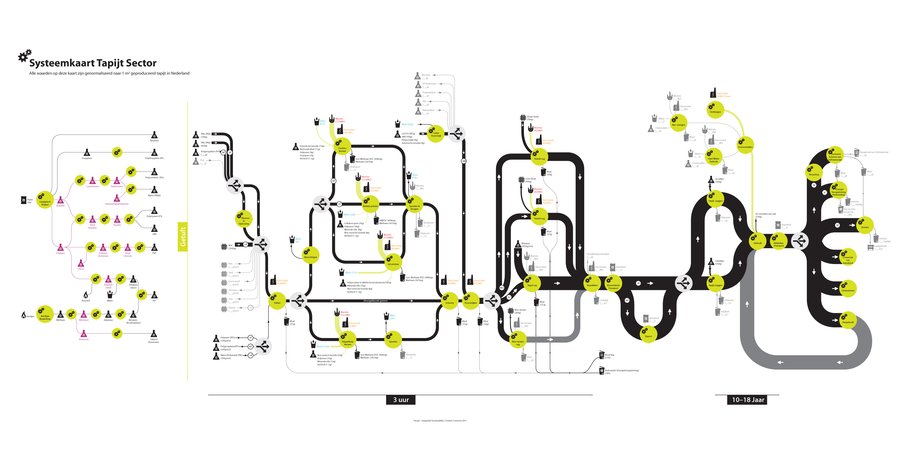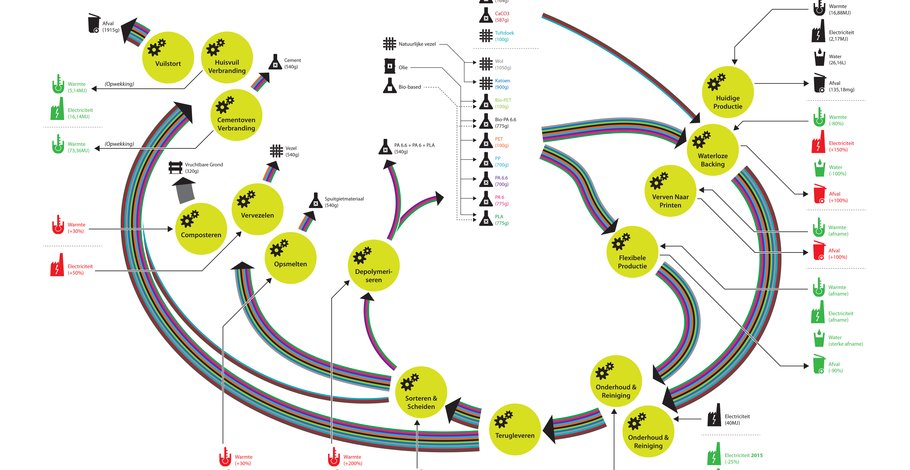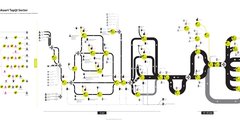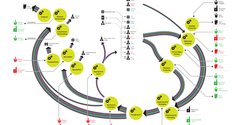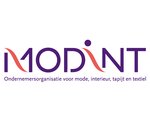
Carpet sector roadmap
Project > Mapping the carpet sector towards 2030
Together with MODINT and DNV we mapped the Dutch carpet sector and developed a road map to a circular carpet industry in 2030. We used system mapping and visualization techniques to bring at-a-glance insight to the stakeholder meetings. With this insight we plotted interventions to transition the industry towards a circular and bio-based industry within two decades.
Moving towards recycling and bio-based materials
A major challenge for the carpet sector is securing the right resources to continue producing carpets in the future. Most of the carpets today are oil-based (e.g. Nylon), which is a threatened resource. Together with DNV we investigated two innovative approaches with the sector to secure the sector's supply: material recycling and bio-based materials.

Detail of the present-state system map
System mapping as a strategic tool
To get a grip on the complexity of the sector's flows and relations we developed a sector wide system map. This map visualizes the material flows and makes clear how the current resource flows can be transformed into a sustainable system. Using this, we bring together the stakeholders and make strategic decisions on making circular connections, sector-wide improvements, and collaborations.
Using this map, we developed a road map with all the stakeholders for the future of the sector in 2030. The diagram of the road map, shown on this page, visualizes the current resource flows in the outer circle. The inner circles shows how over time the application of new pathways and technologies enable the sector to transition into a circular economy.
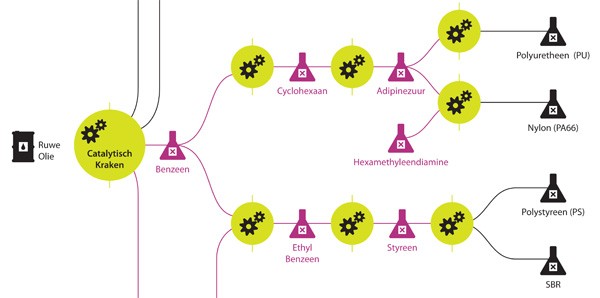
Circular economies enabled
The visualization creates understanding of how the carpet sector wants to evolve its production systems and enables clear communication about future strategies. Clarity and understanding are key ingredients for the sector to work together and define sectoral programs in which competitors work together to transition the carpet sector (including the material suppliers) towards a circular business model.
Media & Downloads
Reference Projects
DNV Waste Water Chains
This project is a visual exploration of the Dutch waste water sector in 2030. It takes a closer look at the role of waste water processing facilities for the provision of clean water, renewable energy, and valuable material inputs for society of the future.
The vision for 2030 concerns the role of waste water management in four major parts of society: the built environment, agriculture, industry, and natural lands.
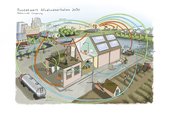
District heating vision Tilburg
This project researches a sustainable district heating system in the Dutch city of Tilburg, developed with our consortium partners.
The vision includes both ecological and social sustainability, and functions as the starting point for all parties involved to cooperate toward a sustainable and carbon neutral heat provision.
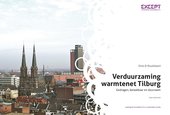
Meat Sector Roadmap
We developed a roadmap of the Dutch meat process sector, production and processing companies and their suppliers, together with DNV. The road map shows opportunities for optimal use of all energy and material flows in the product chain of chicken, pork and beef, and maps their sources. The maps bring insight to all stakeholders involved, and enables decisions on improving entire sections of the production chain at once.
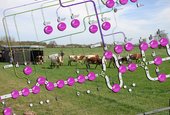
Contact
Except
Integrated Sustainability
 +31 10 7370215
+31 10 7370215
Client & Partners
Team
-
Elias de Valk
Industrial Ecologist
-
Eva Gladek
Industrial Ecologist
-
Gerard Vink
Communication Strategist
-
Michiel van der Vight
Senior Associate
